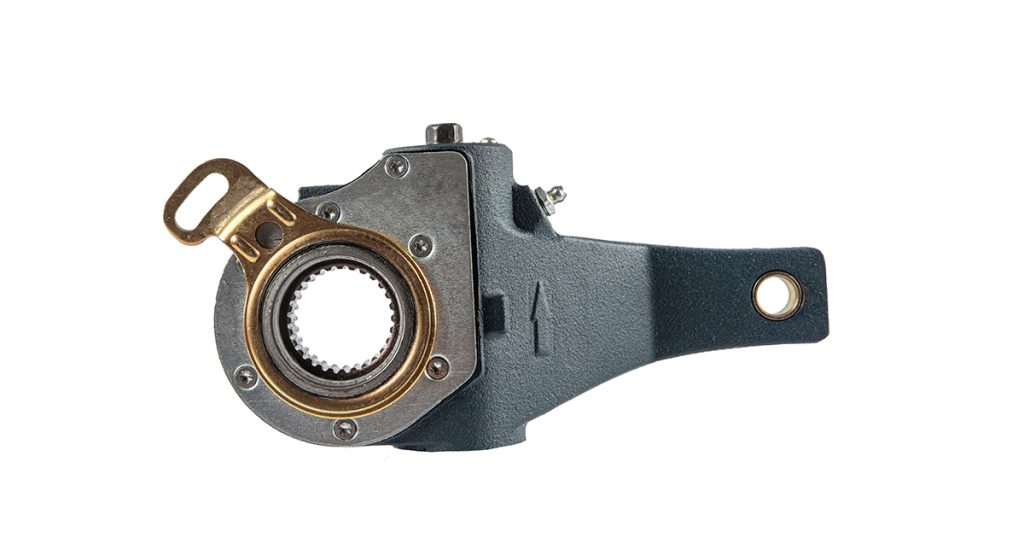Home » Training » Trailer Glossary » Slack Adjuster

Slack Adjuster
A Slack Adjuster is a lever connecting the brake chamber push rod with the foundation brake camshaft. It multiplies the push rod force by the slack length to create a rotational force (torque) to rotate the brake camshaft when the brake treadle is depressed. It also provides a means of adjusting clearance between brake shoes and the drum to compensate for lining wear. Some models are automatic, while others require manual adjustment.
Manual Slack Adjusters
Function
Manual Adjustment: Technicians manually adjust the brake clearance using a wrench.
Periodic Maintenance: Regular checks and adjustments are necessary to maintain proper brake performance.
Advantages
Cost-Effective: Manual adjusters are simpler and less expensive.
Easy to Inspect: Technicians can visually assess wear and adjust as needed.
Application
Older Vehicles: Manual slack adjusters are common in older heavy-duty trucks.
Considerations
Labor-Intensive: Requires skilled technicians to perform regular adjustments.
Risk of Neglect: If not adjusted correctly, brakes may become out of compliance.
Safety Concerns: Improperly adjusted brakes can lead to accidents.
Automatic Slack Adjusters (ASA)
Function
Automatically Adjust for Brake Lining Wear: ASAs continuously adjust the brake clearance as the brake linings wear down.
Self-Adjustment: They maintain optimal brake performance without manual intervention.
Safety: Helps prevent out-of-adjustment brakes, reducing the risk of brake-related accidents.
Advantages
Consistent Brake Adjustment: ASAs ensure uniform braking force across all wheels.
Reduced Maintenance: Less need for manual adjustments.
Improved Safety: Properly adjusted brakes enhance vehicle stability and stopping power.
Application
Newer Vehicles: ASAs are standard in modern heavy-duty trucks and trailers.
Industry Standard: Most manufacturers equip their vehicles with ASAs.
Considerations
Quality Matters: Properly functioning ASAs are critical for safety.
Regular Inspection: Check ASAs during routine maintenance to ensure they are working correctly.
